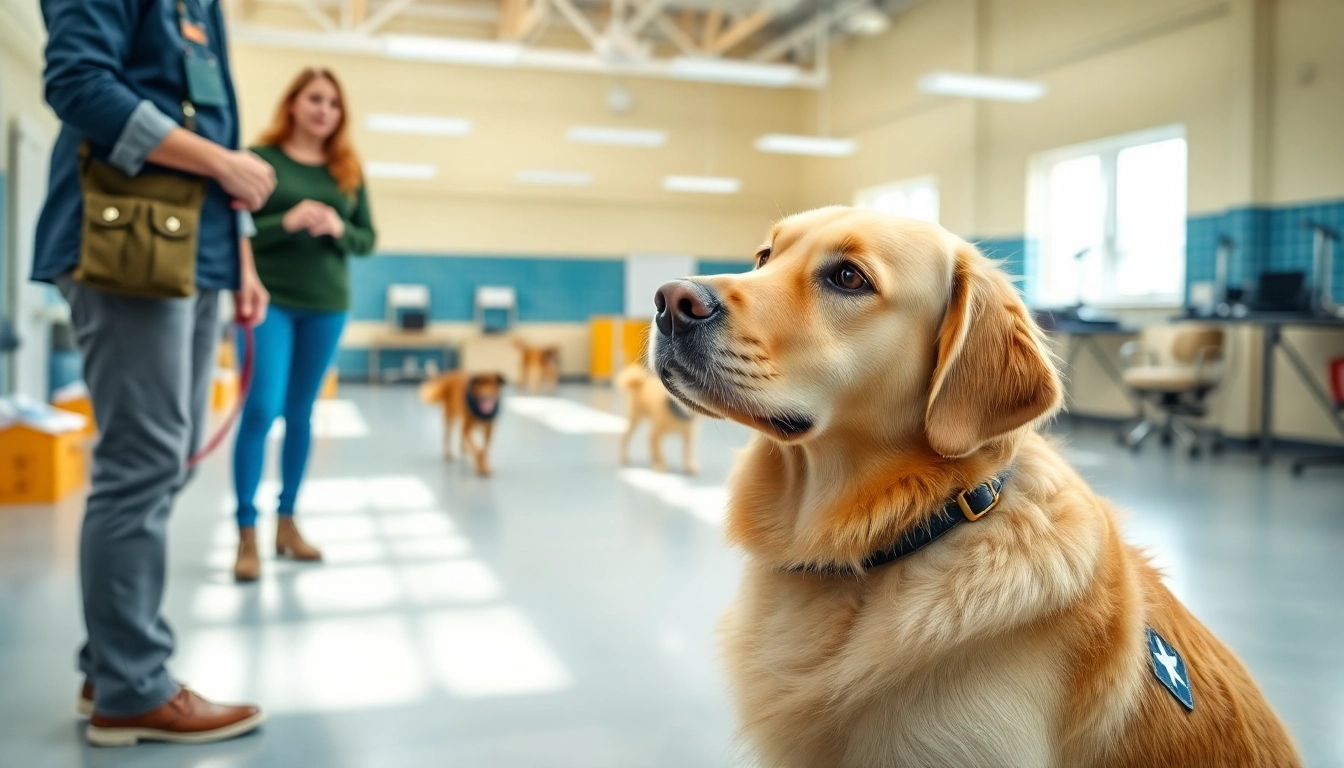
Understanding Service Dogs
Definitions and Types of Service Dogs
Service dogs are specially trained canines that provide assistance to individuals with disabilities, enabling them to perform daily activities with greater independence and confidence. These dogs are distinct from emotional support or therapy animals, as they’re trained to perform specific tasks that mitigate their handler’s disability. There are several types of service dogs, including:
- Mobility Assistance Dogs: These dogs help individuals with limited mobility. They can perform tasks such as retrieving objects, opening doors, or balancing their handler while walking.
- Guidance Dogs: Often assisting individuals with visual impairments, these dogs help navigate obstacles and provide support in unfamiliar environments.
- Medical Alert Dogs: These dogs are trained to detect health issues like seizures, low blood sugar, or allergic reactions, alerting their handler or others in case of an emergency.
- Psychiatric Service Dogs: Tasked with supporting individuals with mental health conditions, these dogs can curb anxiety, remind the handler to take medication, or provide comfort during distressing situations.
Common Disabilities That Qualify for Service Dogs
Various disabilities may qualify an individual for a service dog. Some of the most common include:
- Mobility Impairments: Conditions that affect physical movement, such as spinal cord injuries or degenerative diseases.
- Visual Impairments: Including total blindness or severe visual impairment, where a guide dog offers significant independence.
- Seizure Disorders: Individuals who suffer from uncontrolled seizures can benefit greatly from service dogs trained to alert them or others to the onset of an episode.
- Anxiety and PTSD: Individuals experiencing anxiety disorders or post-traumatic stress disorder often find service dogs beneficial for emotional comfort and grounding.
Legal Considerations of Service Dog Ownership
Understanding the legal rights and responsibilities associated with service dog ownership is crucial. Under the Americans with Disabilities Act (ADA), service dogs have the right to accompany their handlers in most public places. However, in order for a dog to be considered a service dog under the law, it must be trained to perform tasks specific to the handler’s disability. It’s also vital to be aware of any local laws that may pertain to service dog ownership, including registration requirements and public access laws.
Why Buy a Service Dog?
Benefits of Having a Service Dog
Investing in a service dog can drastically improve the quality of life for individuals with disabilities. Here are some notable benefits:
- Increased Independence: Service dogs can perform tasks that enable their handlers to navigate daily life without constant assistance from others.
- Emotional Support: The companionship provided by a service dog can help reduce feelings of loneliness and anxiety, especially for individuals dealing with mental health challenges.
- Physical Assistance: These dogs can assist with mobility tasks, which can enhance their handler’s safety and overall physical well-being.
The Role of a Service Dog in Daily Life
Service dogs play a significant role in the daily life of their handlers. They are more than just pets; they become integral partners in managing disabilities. A service dog may remind their handler to take medication, alert them if their blood sugar levels drop, or assist them in physical activities that they might otherwise struggle to perform alone. This relationship enhances lifestyle and allows individuals to engage more fully in society.
Potential Challenges with Service Dog Ownership
While the benefits of owning a service dog are substantial, potential challenges exist as well. These may include:
- Training and Maintenance: Proper training is essential for a service dog to function effectively. Ongoing training and socialization are also necessary to ensure the dog remains well-behaved in various environments.
- Financial Responsibility: Owning a service dog entails costs, including initial acquisition, training, veterinary care, and daily expenses such as food and grooming.
- Social Perception: Some individuals may face misunderstanding or stigma regarding their need for a service dog, which can lead to challenges in public settings.
Steps to Buy a Service Dog
Researching Different Types of Service Dogs
The process of buying a service dog begins with thorough research on the types of service dogs available. Consider the specific tasks you need help with, and identify the type of service dog that best meets those needs. It is essential to understand the characteristics, training requirements, and typical temperament of different breeds. Some breeds are naturally more suitable for certain types of service work than others. For example, Labrador Retrievers are commonly trained for mobility assistance due to their intelligence and collaborative nature.
Finding Reputable Breeders or Organizations
Finding a reputable source to acquire a service dog is critical. Look for organizations that specialize in training service dogs and have a positive reputation in the community. It is advisable to ask for referrals, investigate reviews, and verify that the organization adheres to standards set by recognized authorities, such as Assistance Dogs International. Credentials, training methods, and success rates should be closely evaluated when deciding where to buy a service dog.
Assessing Compatibility with Your Needs
When selecting a service dog, compatibility with your personal needs is paramount. Consider the dog’s temperament, energy level, and training in relation to your lifestyle and requirements. Interaction with potential service dogs can provide insights into whether a particular dog would be a good match. A well-matched service dog can foster a harmonious partnership, enhancing both the handler’s and the dog’s quality of life.
Training Your Service Dog
Basic Training Essentials for Service Dogs
Training is one of the most crucial aspects of service dog ownership. Basic training should cover essential obedience commands, such as sit, stay, come, and down. Additionally, task-specific training should be conducted according to the handler’s needs. Early socialization is also important, helping the dog become comfortable in diverse environments and with different people.
Advanced Training Techniques and Resources
Once basic commands are mastered, advanced training helps refine a service dog’s skills. This can include specialized tasks tailored to the handler’s disability, such as deep pressure therapy for anxiety or alerting a handler with hearing impairments. Collaborating with professional trainers or enrolling in service dog training programs can provide expert guidance for advanced training techniques.
Maintaining Ongoing Training and Support
Service dog training does not end after the initial commands are learned. Regular reinforcement, continued training exercises, and periodic assessments are necessary to ensure the dog remains effective in their role. Joining support groups or communities with other service dog handlers can provide valuable resources and shared experiences to facilitate ongoing training.
Cost and Financing Options for Buying a Service Dog
Typical Costs Associated with Service Dogs
The cost of acquiring and maintaining a service dog can vary widely. Initial expenses may range from $15,000 to $30,000, depending on factors like training, breed, and provider organization. Annual costs, which include food, veterinary care, insurance, and supplies, can further add to the financial commitment. Proper budgeting is crucial to manage these costs effectively.
Financial Assistance and Grants for Service Dogs
Various organizations and foundations offer financial assistance and grants to help individuals acquire service dogs. Researching and applying for these resources can alleviate some of the financial burdens. Additionally, many service dog training organizations offer financing plans or payment options to make the process more accessible.
Budgeting for Your Service Dog’s Needs
Creating a comprehensive budget for your service dog’s needs is essential for responsible ownership. Consider both the initial investment and ongoing costs in your budget. This includes training sessions, regular medical check-ups, food, and incidental expenses. Doing so ensures that you can provide the best care for your service dog throughout its life, leading to a successful partnership that enhances your day-to-day experience.






